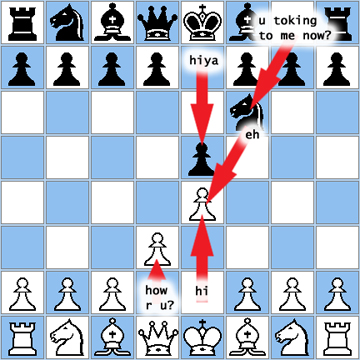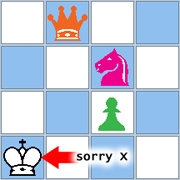|
| |
|
| |
|
|







|
|
TCHS 4O 2000 [4o's nonsense] alvinny [2] - csq - edchong jenming - joseph - law meepok - mingqi - pea pengkian [2] - qwergopot - woof xinghao - zhengyu HCJC 01S60 [understated sixzero] andy - edwin - jack jiaqi - peter - rex serena SAF 21SA khenghui - jiaming - jinrui [2] ritchie - vicknesh - zhenhao Others Lwei [2] - shaowei - website links - Alien Loves Predator BloggerSG Cute Overload! Cyanide and Happiness Daily Bunny Hamleto Hattrick Magic: The Gathering The Onion The Order of the Stick Perry Bible Fellowship PvP Online Soccernet Sluggy Freelance The Students' Sketchpad Talk Rock Talking Cock.com Tom the Dancing Bug Wikipedia Wulffmorgenthaler |
|
bert's blog v1.21 Powered by glolg Programmed with Perl 5.6.1 on Apache/1.3.27 (Red Hat Linux) best viewed at 1024 x 768 resolution on Internet Explorer 6.0+ or Mozilla Firefox 1.5+ entry views: 2191 today's page views: 524 (110 mobile) all-time page views: 3400509 most viewed entry: 18739 views most commented entry: 14 comments number of entries: 1228 page created Sat Jul 12, 2025 19:09:07 |
|
- tagcloud - academics [70] art [8] changelog [49] current events [36] cute stuff [12] gaming [11] music [8] outings [16] philosophy [10] poetry [4] programming [15] rants [5] reviews [8] sport [37] travel [19] work [3] miscellaneous [75] |
|
- category tags - academics art changelog current events cute stuff gaming miscellaneous music outings philosophy poetry programming rants reviews sport travel work tags in total: 386 |

| ||
|
- academics - Midterms were good but not the best that they could be. Let's do a count - Psychology, 100 MCQs, rock-solid sure on about 85% plus or minus a few percentage points. Negative marking used, so it's 1 point for a correct answer, 0 for no answer and -0.25 for an incorrect one. Eliminating one option still gives a positive expectancy, unfortunately two of those i got down to two options turned out wrong. Darn. Yet again, changing one's first guess kills. Does negative marking really make a difference, though? If one would get the answer right by any means, he would still get a full point. But if guessing between two options, the expectancy drops from 1*.5+0*.5=0.5 to 1*.5+(-.25)*.5=0.375, so on and so forth. I daresay it mostly messes up with candidates' brains, most of all those who are supremely risk-adverse and get hung up on the loss effect. Supposedly, the relative final scores are unaffected. Next up, Computer Graphics. Another "hand in paper and gain insight" moment, though it was only a small part of the whole. Should keep test papers on my workdesk to hand up to an outbox for guaranteed enlightenment. Macroeconomics had an 8% question bogging me down, and after the test my calculations revealed it was due to a missing negative sign on the first step. Oh well. Partial credit for all the rest, hopefully. Computer Networks was the only one with no real regrets. Now that that's over, here's a blast from the past; Dug this up from an old preparatory text file hidden in a reserve Miscellaneous folder, where byte representations never again see the light of an LCD screen's polarizing backlight. So what inspired me to, in forum parlance, necro this (bring a long-forgotten topic back from the dead by posting in it)? First off, the toilet dispute in the latest FIDE World Chess Championship. Somehow, it brought this uncompleted post back into my consciousness. Secondly, during yesterday's casual kickabout, a few acquaintances thought I was from the Chess Club when we were trying to divide ourselves into teams according to affiliation. Entirely inaccurate, but a second reminder - I could no longer put the job off, a guy's gotta do what a guy doesn't really have to do: (Past material follows) After realisation of just how fiendishly complex even the simplest of conversations can be, I understand my disinclination to talk too much. Knowing how mundanely most chats go, how do people manage to see them through? To illustrate, consider some common snippets (edited for clarity) below. Names have been changed to protect the innocent/guilty where appropriate. Example Basic Opening (Comments in italics): <C> hi C, holding the white pieces, attempts the HI Opening. Its popularity among conversationalists stems from the fact that it is flexible enough to support multiple plans of development. Other common moves from the same family of standard openings are the classical "1. hello", "1. harlow" and the hypermodern "1. yo". The use of capital letters is considered depreciated. <D> hiya Another popular reply would be "1. ... hi", the Symmetrical Response. Considered safe if lacking in creativity, it passes back tempo to the first conversationalist and awaits the revelation of his strategy. Popular amongst beginners hoping to limit early-game washouts. <C> how r u? The Concern Gambit. C lays claim to the centre of the board with a calculated thrust, designed to force a reactive "2. ... im fine, thank u" - Concern Gambit Accepted, and shift towards the main line of Totally Unproductive Reluctant Defence. Experts consider white to have the upper hand against a conservative black, especially if he can press the central advantage and create space for positioning his major pieces. <D> u toking to me now?! Black adventurously opens the game with an Irrationalist Approach, eschewing defence of the centre by opening a second front on the side. White will now have to decide whether to meet Black on his own ground, or build on his move advantage. <D> eh (!) Black seizes the initiative by moving twice in a row. Frowned upon in the highest levels as a breach of courtesy, it has nevertheless been used to great effect in casual play. Natural extensions of this strategy are the 3-Sentence (moving three times in a row) and the banned Great Flood Maneuver, consisting of holding a random key down. It has been proven to be a stalemate from any position in a two-player game, and looked down upon as ungentlemanly. 
Board position after 1. hi hiya 2. how r u? u toking to me now?! eh (!) (Screenshot from AlphaChess) <C> YAH? White hastens to define the scope of combat, seizing upon Black's exposed Knight. The use of ALLCAPS is normally frowned upon, but tacitly accepted here as quid pro quo for Black's two-letter double move. Black could pursue the well-researched Guilt Trip Attack by pointing that out with "3. ...so angry ah?" but it is clear that a competent White will have no trouble fending that off, possibly with "4. SORRY CAPS LOCK STUCK" which will hand him a psychological edge for the remainder of the game. One of the joys of MSN is the ability to practice multiplayer scenarios, as shown: <A> oh yah X also <A> damn ah gua (??) Questionable in light of circumstances... <B> eh he here leh (!) Trap sprung - a discovered attack! <C> aiyoh <D> aiyoh Other participants sense the weakness of A's situation after his blunder. <B> insensitive <C> no bloody sense * T has been added to the conversation. * (!!) A masterstroke! <A> sorry X Saving move that puts his King out of check, but for how long? ... 
White temporarily escapes the three-pronged attack by the Orange Queen, the Pink Knight and the Green Pawn This was one of the classics that inspired it all (only lightly commented - its elegance should speak for itself): <A> he your primary school?? <B> no <A> then? <B> ah i tink his gd fren my pri sch classmate <A> wow <A> so fun <C> i think he chess club one <B> he damn qiang ar? <B> y u mention him <A> no somebody said howl wat <A> so howl (!) Combinatorial move. Not that rare, but refreshing whenever it happens. <A> so i just say for fun <D> ?? <B> wow <A> chess club got special action <B> who is king rama (?) I really have no idea what this is supposed to do. <B> OH YAR <A> i dunno <D> capture en passant <A> that one Y teach me one <A> when u say chess u must use both hand rub both breast (!!) A gem that RVS practitioners dream of finding. Brilliant theoretical novelty! <D> ?! <A> next time i demo for u <A> he teach me one <B> yar i oso c b4 <A> no wonder he gana kick out <B> actualli A scold vulgarity damn ahgua <C> f**k u, tao yan (!) Bold flanking maneuvere. <B> eeeeeks <B> u meanie! <B> big meanie <C> i'm not a meanie! <C> u're the big meanie! (!?) Used frequently by novices in primary school, but this shows that it is still viable in the hands of experts. <D> i think i can't post this after all Turns out, I just did! <C> lol <A> I FARK U AH <B> big weenie ... (You get the general idea) (Past material ends) For more of the same, visit the shrine of RVS, bash.org. Next: Diving Into Power Trends
C. Wenhoo said... WAD THE
|
||||||||||
 Copyright © 2006-2025 GLYS. All Rights Reserved. |
||||||||||